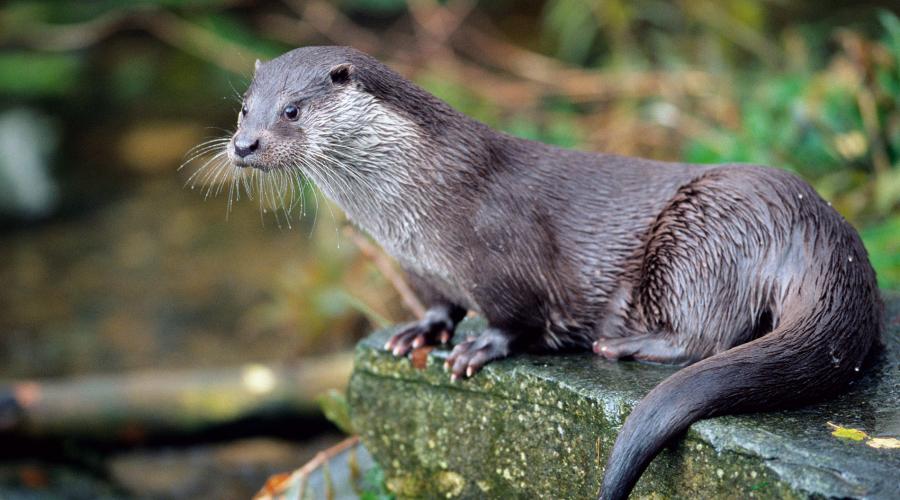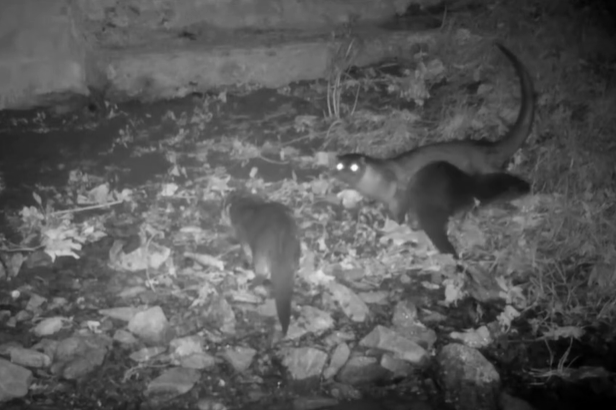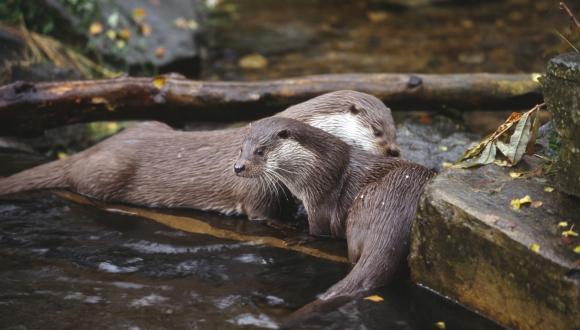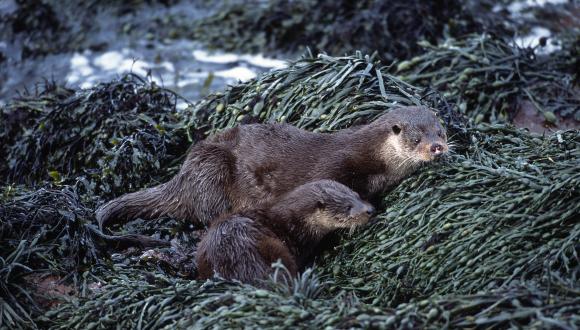
Otter
Scotland is a European stronghold for the otter, a species of the land, river and sea.
The otter (Lutra lutra) was lost from most of England and Wales between the 1950s and the 1970s because of pesticide pollution of waterways. But it survived in Scotland’s cleanest bodies of water in the north and west.
Today, the species is flourishing across Scotland, and recovering well across the UK as waterways are cleaned up. The Scottish population is estimated to be around 8000 otters.
Otters are largely solitary, semi-aquatic mammals that get most of their food from lochs, rivers or the sea. The Scottish population has an unusually high proportion (perhaps 50% or more) of coastal-dwelling individuals, which feed almost exclusively in the sea. An otter must eat around 1–1.5kg of prey daily.

This work by the Scottish Invasive Species Initiative will help ensure species like this family of otters continue to have suitable habitat to raise their young.
Scottish Invasive Species Initiative - Otters Foraging video
Coastal otters are sometimes called ‘sea otters’, but they are exactly the same species as the animals that live further inland. Mainly active during the day, coastal otters generally have much smaller home ranges than their riverine counterparts, because of the abundance of fish and crustacean prey in inshore waters. Otters must keep their fur free of salt using freshwater for it to remain effective as insulation.
In freshwater, otters feed:
- mainly on fish such as trout, salmon and eels
- on spawning frogs and toads in spring
- occasionally on mammals and birds
Otters that live in freshwater habitats are largely nocturnal and occupy very large home ranges (around 32km for males and 20km for females).
‘Holts’ are used for shelter and breeding and may take the form of a burrow, natural hole, cave or other structure (including man-made ones). Otters may also rest or seek temporary shelter in above-ground structures known as ‘couches’. Britain’s otters may breed during any month of the year.
The otter belongs to the same family as the badger, pine marten, stoat and weasel, and American mink.
Threats to otters
Scotland’s otter's are most at risk from road accidents, the single biggest source of otter mortality (excluding natural causes).
NatureScot works closely with developers and road engineers to ensure that mitigation measures are put in place to avoid otter casualties on new roads. Such measures should also be retrofitted at existing known black spots where possible.
Other threats to otters include:
- commercial eel fishing
- ‘creeling’ for crustaceans
Protection of otters
Find out about the otter as a protected species.
Learn about otters and licensing.
Read our guidance for planners and developers on protected animals.
Report a sighting
Find out how to submit records of mammal sightings on The Mammal Society website.
Find out more
Trend note: Trends of Otters in Scotland
Site condition monitoring for otters in 2011–12: NatureScot Commissioned Report No. 521
Monitoring the Otter: Conserving Natura 2000 Rivers Monitoring Series No.10
Contact
If you already have a licence number, include it in the subject line of your email, or have it to hand when you call.







